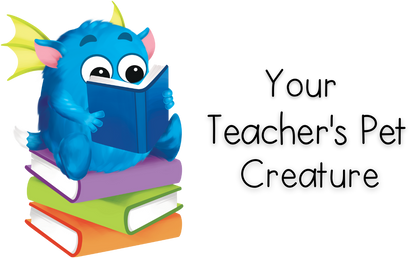Your Cart is Empty
Learning Topics
Best Sellers

How to Approach Emotional Self-Regulation with Neurodiverse Students
by Jonathon Denholm March 14, 2022 3 min read
At its best, education caters to all students, including neurodivergent learners. Learners who are neurodivergent process things differently than those who are neurotypical. As educators, one of the most powerful things we can do to help these students is take the time to educate ourselves on what neurodivergence looks like. Considering that the word itself wasn’t even coined until the late1990s, it is a topic that has historically been very overlooked in traditional education courses. This means that many teachers know very little about how to support neurodivergent students. There are so many different ways we can educate ourselves in order to best help these students learn and grow.
Breaking down neurodiversity
Theneurodivergent population includes anyone who processes information differently. Initially, the neurodivergent population was thought to consist mostly of individuals impacted by autism; however, over time other groups of individuals have been added under the umbrella of neurodiversity, including those with ADD, ADHD, and dyslexia, and dyscalculia.
No two neurotypical children are exactly alike. By the same principle, no two neurodivergent children are exactly alike. This means that no single strategy will work in an identical way for two children. This is why it is so vital to have a toolbox of different techniques to use with all children.
Supporting Neurodivergent Learners
Emotional self-regulation can be difficult for students who are neurodivergent. These students inherently process the world around them differently than neurotypical students, but emotion regulation is a vital skill for all students to master. Without it, students are unable to be nearly as effective in their efforts to learn. Emotional regulation struggles can even impact the emotional capacity of students to be able to consume what they are being taught. Self-regulation skills allow students to function independently and be successful in the classroom, even when their emotions try to get the best of them.
Emotion Regulation & Strategies
Emotional dysregulation can be seen in students who are neurodivergent. Regulation strategies are plentiful, and they should be taught to students directly and explicitly. Some emotion regulation strategies that work well for neurodivergent learners include breath control, calm corners, and journaling. When a student has a toolbox of different coping strategies at their disposal, they are much more likely to be able to know what works for them when they need one that works for them.
Executive Functioning
Executive function is a skillset that involves mental attributes such as self-control, flexibility, and memory. High levels of it help students to perform at high levels both academically and within society. By the same token, students who lack these skills inevitably find it more difficult to follow instructions and handle big emotions. This is of particular concern for students who are neurodivergent; however, there are things students can do to improve this skill set. Cognitive Behavioral Therapy (CBT) has been found to improve it in adults, but children often don’t see many improvements until they are older. This leaves it up to parents and teachers to work with these children and help them find strategies that work for them in different situations.
Mental health plays a large role in a student’s ability to self-regulate their emotions. This is particularly true for neurodiverse learners. Social anxiety can trigger meltdowns. When this is the case, students must be able to emotionally remove themselves from the situation.
Preparing Teachers to Help Neurodivergent Learners
It is vitally important for us to teach child psychology pertaining to neurodiverse students to our educators. If these students are taught how to regulate their emotions well, they can accomplish absolutely incredible things. Truly, sometimes all a student needs is a little bit ofencouragement. Something as simple as a sticker or a genuine compliment can make a world of difference in the success of a student.
Resources from Your Teacher’s Pet Creature
We take the education of all students very seriously here at Your Teacher’s Pet Creature. This is why we offer a vast array of supplementary tools, materials, and resources that teachers can use to help their students achieve emotional regulation. One great option for this is this set ofbreathing boards. They are designed to promote child mindfulness, which is so great. This calming strategiesposter pack is a great way to visually show self-regulation strategies for students.



